I recently had the pleasure of speaking with Alessandro Fiore, a generative artist and creative coder based in Italy. When he's not busy being a dev team-lead or being a parent, Alessandro spends most of his free time creating awesome generative art.
Over the past two years he's released over a dozen generative art projects on several platforms and quickly risen to become a prolific generative artist in the space. In our conversation we talk about his re-discovery of creative coding and generative art after a long break, the approach that he's adopted and allowed him to drastically evolve his style in such a short time period, as well as some of the traditional and abstract Italian painters that he draws inspiration from.
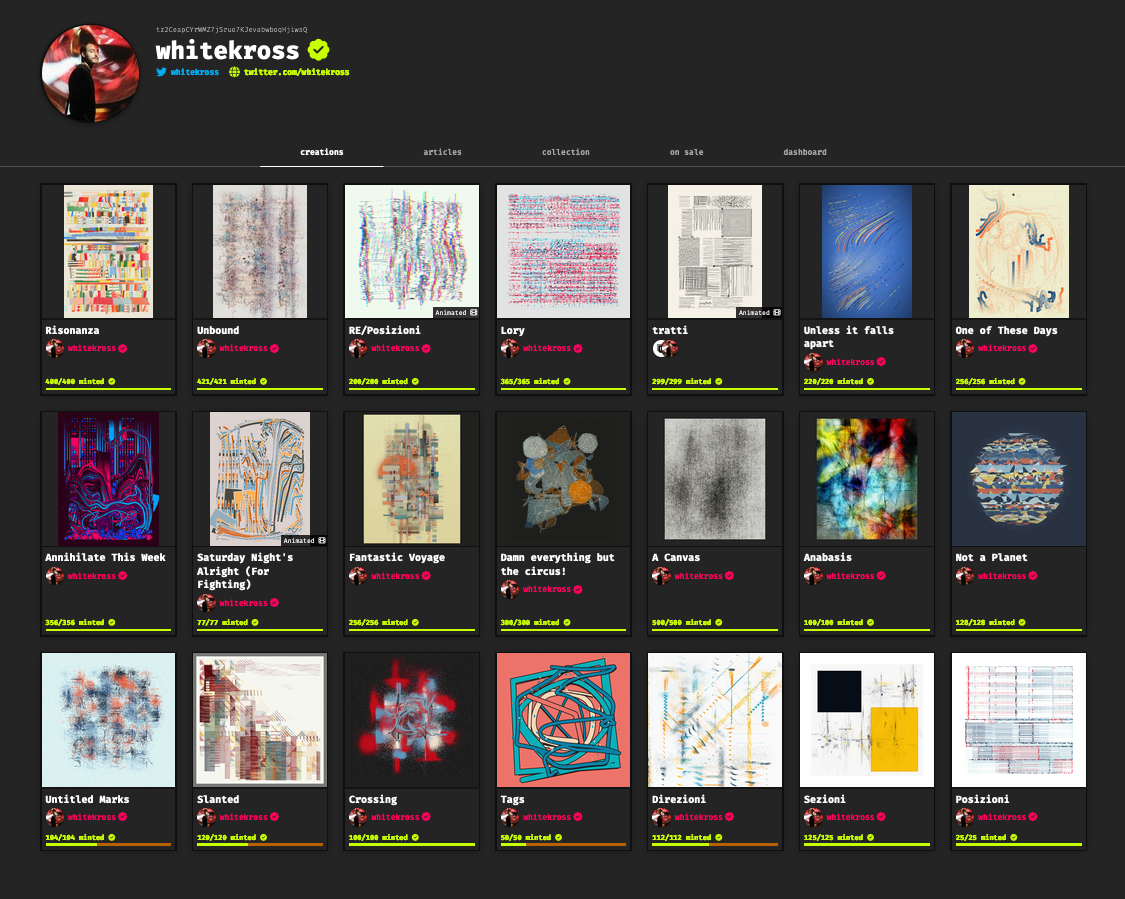
Background and getting into Generative Art
Gorilla Sun: How did you get into generative art? And how did you start with programming initially?
Alessandro Fiore: Yeah, I do programming professionally. Currently I'm team lead for one of the dev teams at Hootsuit; it's a company that does online social media services. A SaaS (software-as-a-service) basically. I've worked with them for about 5 years now, and that's essentially my day-job.
Then there's the other one, that's taking up as much of my time as the official one [laughs]
It's interesting, I actually started programming because of creative coding. I've always been interested in coding technologies, web design, and stuff like that, back when I was at university. I didn't study computer science however, I actually studied Sociology. But because of this passion I got into Flash and Action Script, which later on led me to Processing. There was a big overlap between the communities that were involved with those languages.
That was around 2007-2009. That's also when I started programming professionally and didn't have much time for it anymore. So I forgot almost everything. I still followed the creative coding community from the sidelines, but I wasn't a part of it directly, up until a couple of years ago when I discovered NFTs and fx(hash).
That's when I picked up P5 for the first time, and it ended up being so much fun.
GS: How do you find the time to do generative art while maintaining your job at the same time? And have you had thoughts about doing generative art full-time?
AF: The night is full of resources [laughs]
But on a more serious note, I work from home, so I try to squeeze in some creative coding whenever I find the chance. At night, or during work breaks, I'll try to have a quick lunch and then work on some ideas.
Doing generative art full-time would be a game changer, but there's so many things to consider to take this big of a step. I don't really trust the current market, nor my art enough currently. There's undeniably an economic aspect to it, but having a family and duties towards them, right now it's not a priority and it doesn't feel like the right time for it.
Currently generative art is an outlet for me to express myself creatively, it's something I've missed a lot in the past years and that I really needed mentally. It allows me to express something that's inside of me, and is something that I can't really do in my job. But I don't know, the future is unpredictable. Maybe at some point.
GS: How different is the programming you do for your job from programming your generative art?
AF: It's completely different.
Of course I can be creative in my job; there's often situations where I can come up with creative solutions to certain programming problems, which is not so different in creative coding where it's also about problem solving.
But on the other hand creative coding is very liberating - I don't need to write tests, I don't need to write user-stories, and it's always so much fun when you run into a bug, that isn't really a bug, and could actually become a feature. To that extent it's completely different, it's a completely different way of iterating on your code.
GS: Earlier you made a distinction between the terms Creative Coding and Generative Art? What is Creative coding to you? Is it a more general term? I'm interested in these semantics.
AF: I think Creative Coding is a more general term. Creative coding doesn't necessarily need to be generative or involve randomness and noise. It's simply making something creative with code.
GS: How did you discover fxhash and NFTs in general?
AF: That was during the pandemic - I was still following many people in the creative coding scene during that time, like Marius Watz, and Leander Herzog. At some point I came across a tweet about fx(hash), and it struck me as something really new and interesting. I decided to give it a try.
At the time I was on parental leave because my first son was born - and the thing about becoming a father is that you don't get to sleep much [laughs], but you also end up having a lot of time on your hands. So the these three months gave me the chance to fully explore all of this stuff - then I started working again, but I continued with generative art in my own time.
Stylistic Progression and Process
GS: Looking at your fx(hash) pieces I've noticed that there's a clear progression from piece to piece - not just stylistically, but also conceptually. It's especially apparent in 'Anabasis' that seems like a departure from your initial explorations.
AF: Anabasis was the first project where I tried to create something with the direct intention of it being an fx(hash) release. I thought that to progress I needed something different, which lead to this kind of textured work; whereas previously I had still been porting some of my older Processing ideas to P5.
Anabasis is actually a greek word, but I pronounce in an Italian way - it means as much as 'uprising' or 'rebellion'.
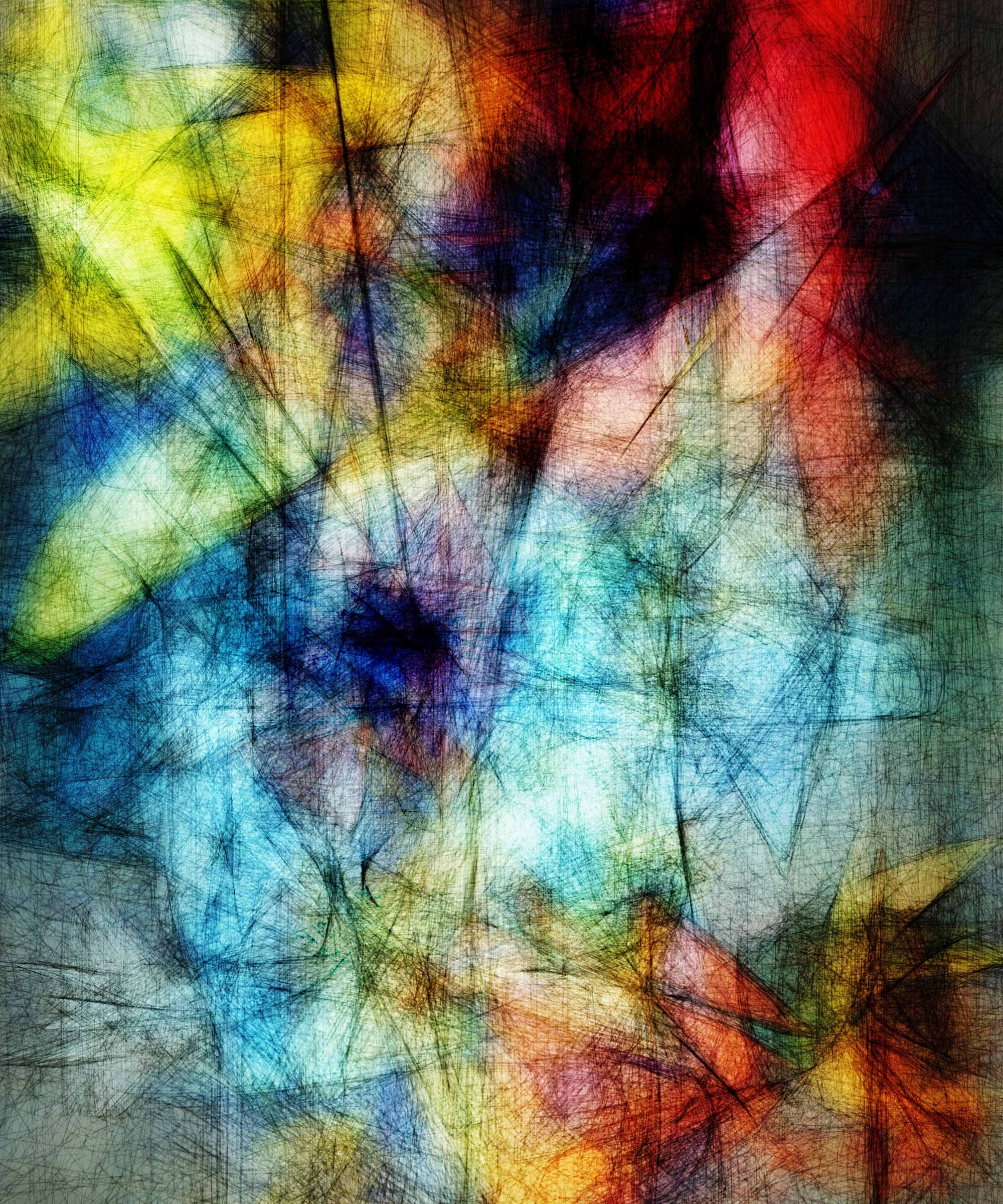
I don't exactly remember the process, but it was very explorative - I kept experimenting until I reached this texture that I ended up liking a lot.
My process has changed quite a bit since then, now I'm a bit more self-conscious about my practice. In the beginning it was a bit more casual, where I would just explore different styles and ideas until I found something interesting to focus on. Now I try to pursue specific ideas, in contrast to before, where I would just randomly explore without a specific goal in mind. But of course the path to a finished piece is never straightforward, there's always bumps and forks in the road that lead you down different paths.
GS: I get that, it's similar for me, it's more productive to do it in that way. In part I think it's also because there's more eyeballs on the art, so you can't just make whatever.
AF: It's a more focused and less naive approach, channeling your efforts in a specific direction rather than exploring by trial and error. But at the same time maybe something gets lost in that approach. The 'naive' approach might be more natural and you might find more interesting things. But at this point I like to be more targeted with my art.
Inspiration and Titles
AF: Right now I'm very passionate and inspired by Italian artists from the 60s - 70s, one of them is Lia Drei, her stuff is very geometric and not that difficult to replicate with code. My goal is not to copy of course, but simply to take inspiration.
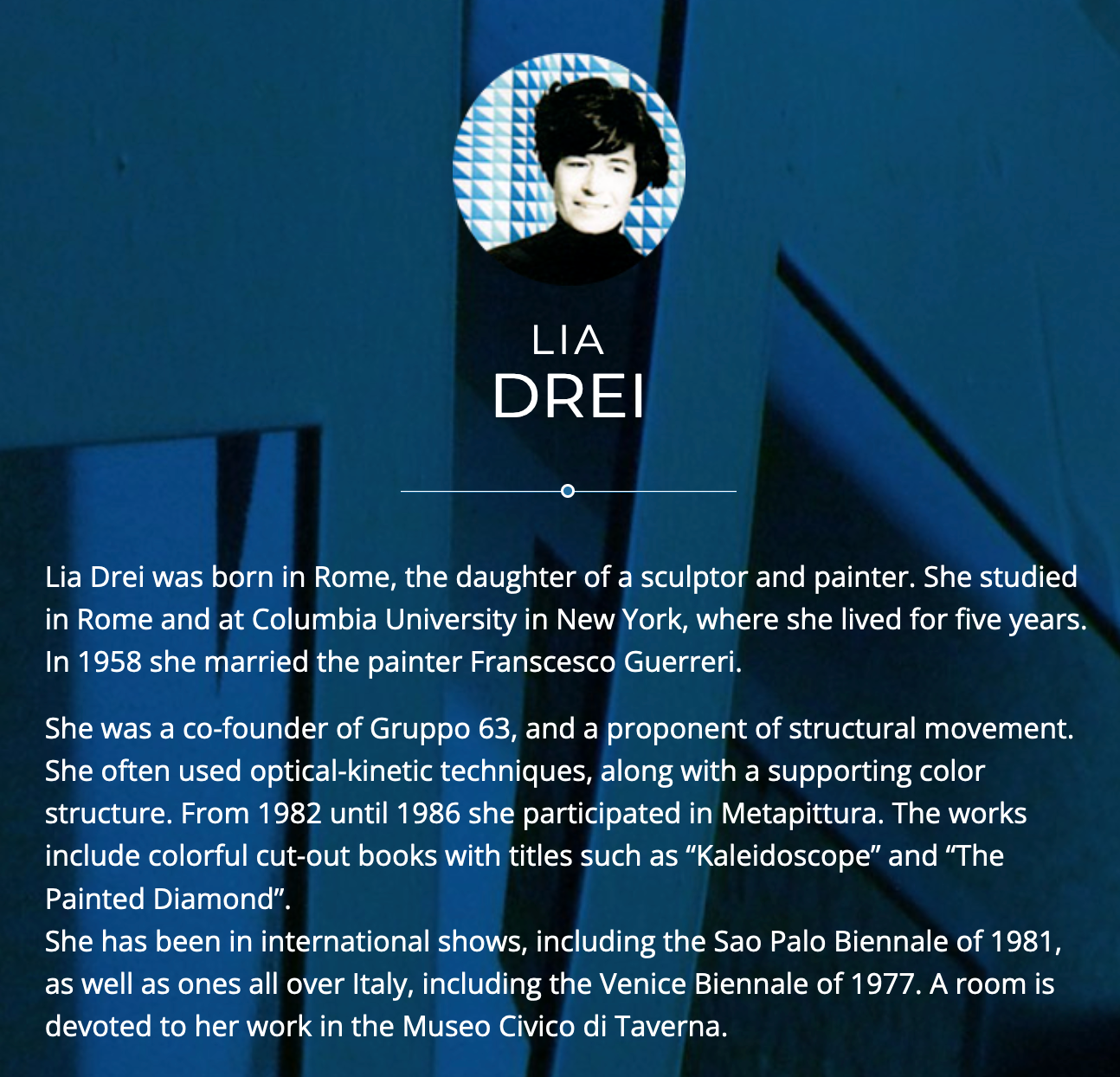
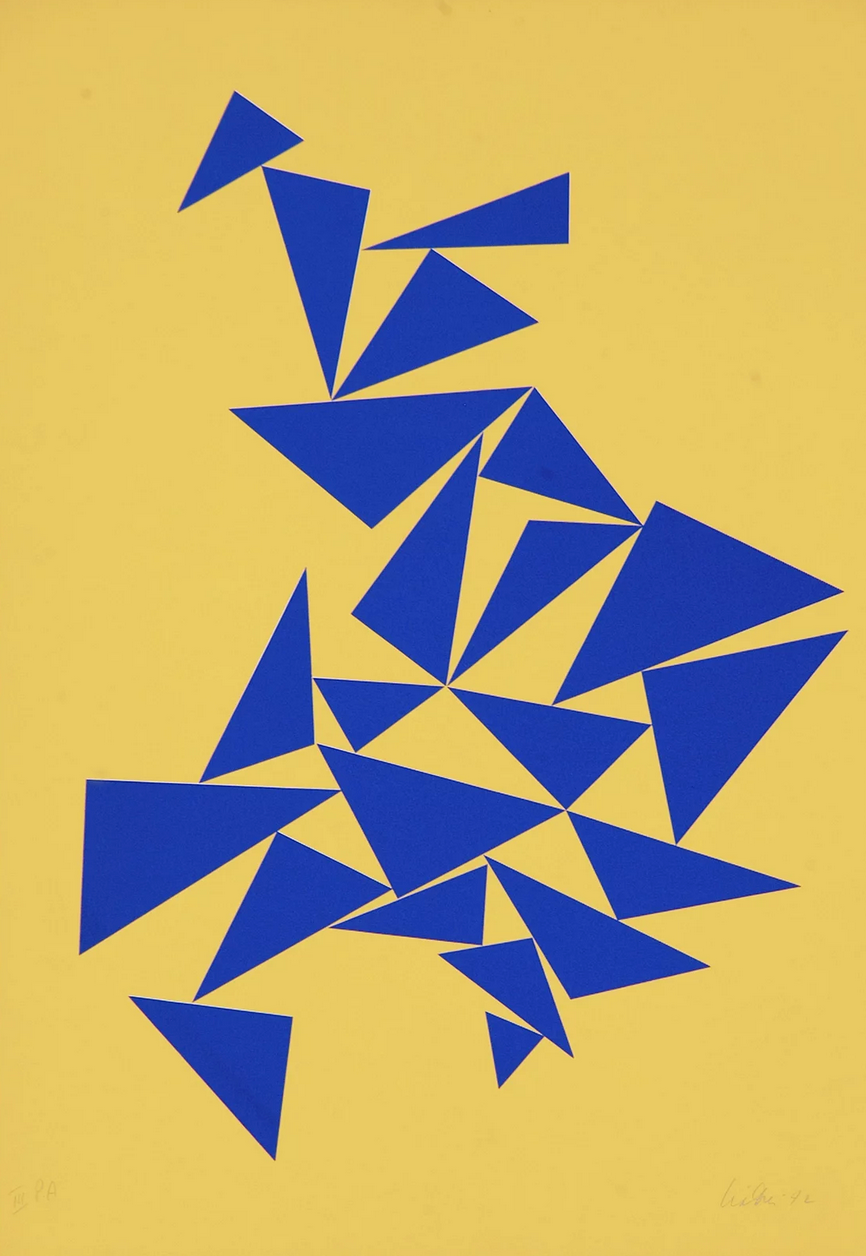
Lia Drei's Bio | One of her Artworks titled 'Triangles on Yellow'
GS: I found it a difficult exercise to capture the essence of different art styles with code. I tried my hand at Suprematism, and although it's very simple geometric shapes, there's something very human about the positioning on the canvas that can't be easily captured.
AF: That's what I find really interesting about professional painters - they have a generative mind. The paintings are not generative and you know that, but their concepts are generative and can serve as inspiration. The hard part is to capture that essence.
In particular the optical art that I'm trying to replicate right now, you can see some examples on my Twitter. It's very simple but also very effective. I find triangles in general incredible, they're simple shapes but very flexible - you can make a lot out of them simply by changing a couple of parameters. Currently that's something I want to explore.
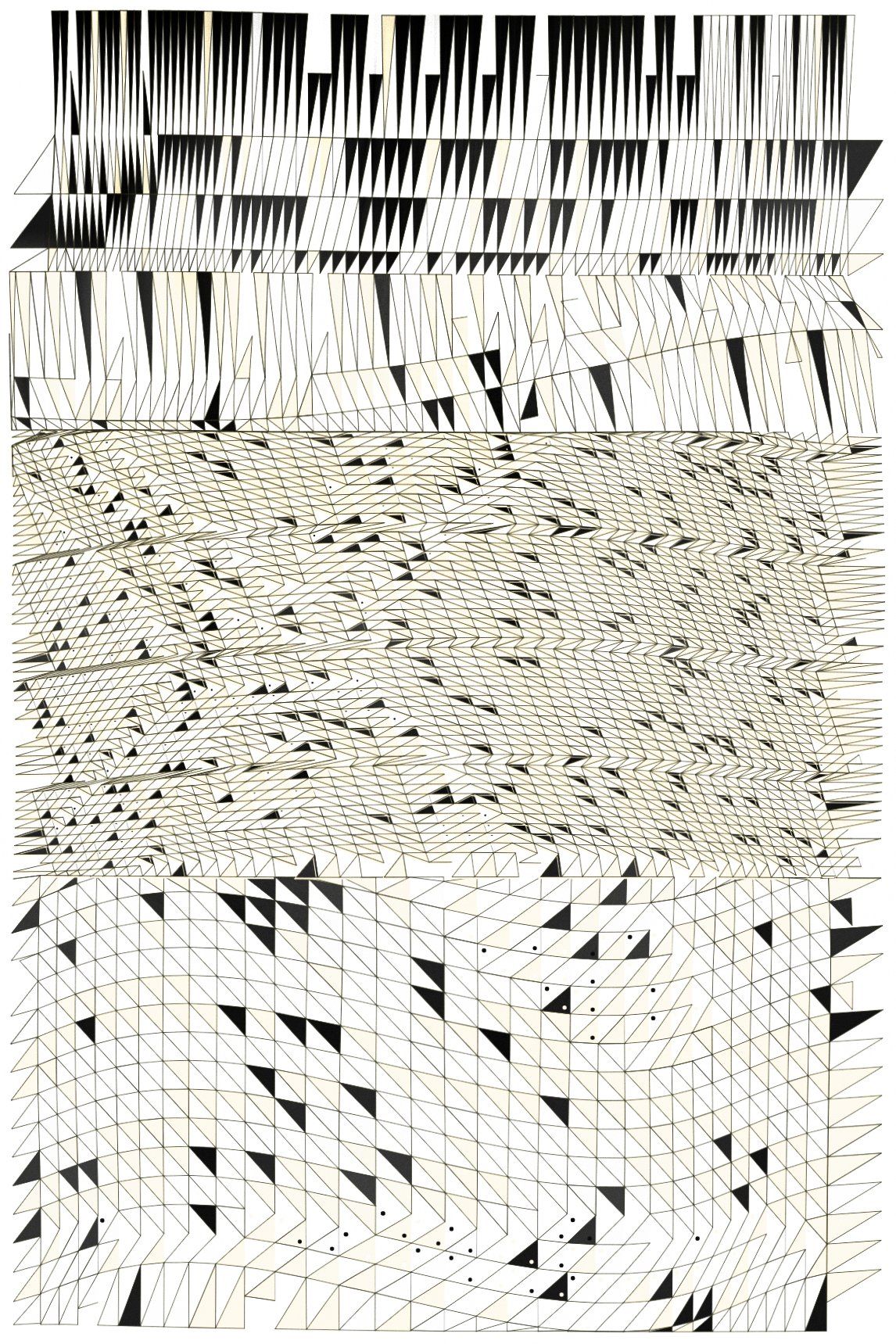
GS: There's something inherently beautiful about the simple geometric shapes: lines, circles, and triangles, they're all fascinating in their own way.
Besides that, how do you find inspiration? I was looking at your piece 'Damn everything but the circus' and the title was really intriguing and fits the art very well. What's the story there?
AF: That one actually borrows a lot of code from Anabasis. I wanted to make something that felt vintage, reminiscent of the 20s and 30s with a sense of nostalgia - when those shapes appeared on the canvas they reminded me of circuses and clowns.
On a completely unrelated note I was reading an article about the writer E.E. Cummings and the quote just fit the piece perfectly.
“Damn everything but the circus! ...damn everything that is grim, dull, motionless, unrisking, inward turning, damn everything that won't get into the circle, that won't enjoy. That won't throw it's heart into the tension, surprise, fear and delight of the circus, the round world, the full existence...”
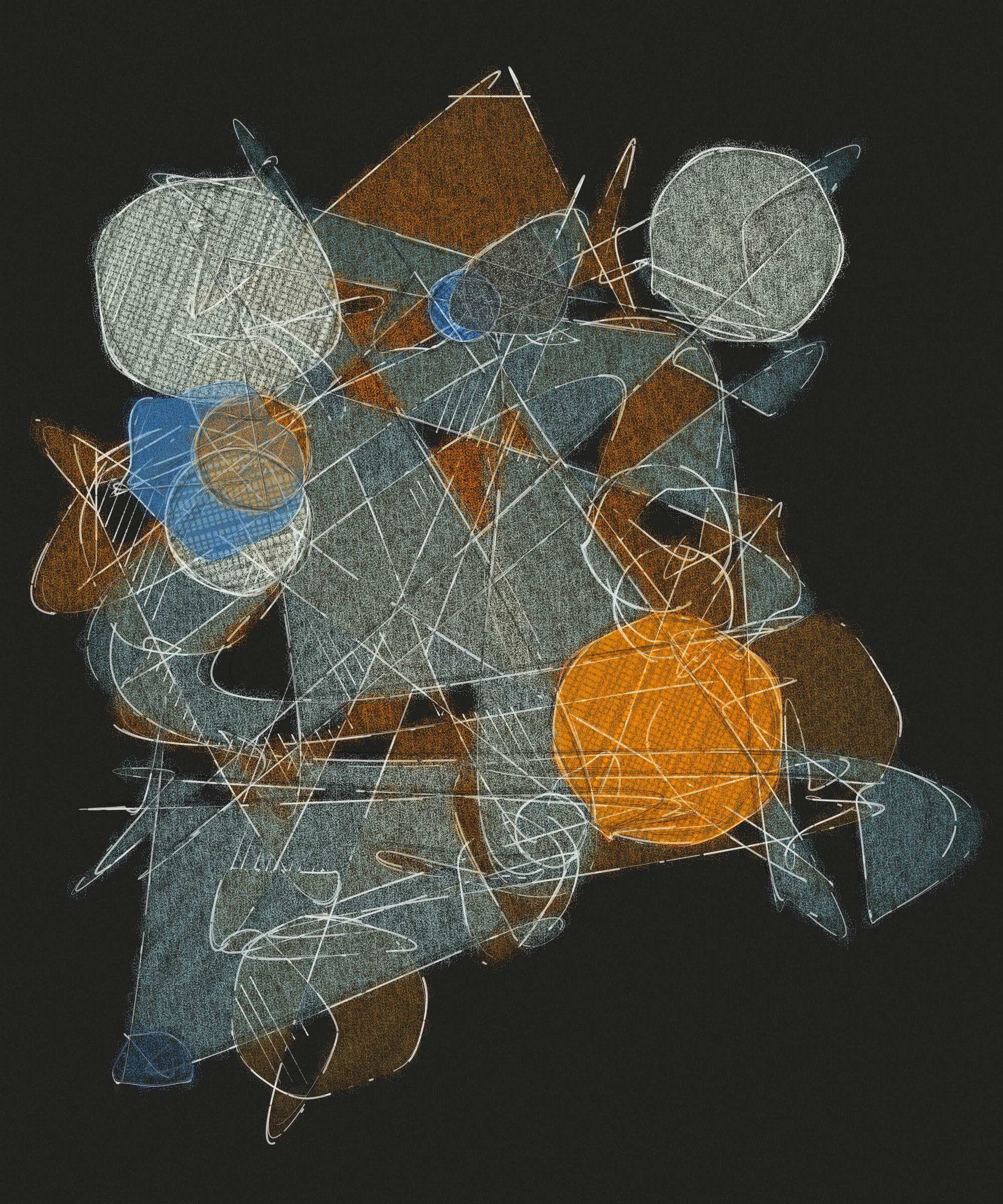
I like to play with titles - sometimes there's a relationship to the piece, sometimes there isn't. The original code-name for the project was 'The Clown', but I thought the quote was a better match and was more fun. As a side note here, the title had an exclamation point at the end, so for a while the URL for the piece was broken before fx(hash) implemented URL slugs.
GS: I often end up with multiple different names for each project, and it becomes difficult to settle on one ultimately.
You have this cool trilogy of pieces titled Saturday Nights alright for Fighting, Annihilate this Week, and One of these Days, can you tell us a bit more about them?
AF: They're all based off of song titles! Saturday Night's alright for Fighting is a song by Elton John - I don't actually know if I can use it as a title for my piece because of copyright but it's there now [laughs]
Short intermission here - I looked into the copyright regarding the usage of song titles and I think it's okay to use it as a title, considering that it's for a different kind of artwork. It only becomes a problem if it creates confusion around the original piece of art - and I genuinely don't think Elton John cares.
Elton John's explosive Saturday Night's alright for fighting
At the time I was seeing a lot of these weekly 'posting events', like Fidenza Fridays, or Meridian Thursdays, and Anti-cyclone Saturdays. This trend gave me the idea for a piece that changes based on the day of the week that it's viewed in.
Technically the piece isn't very complicated, it's a simple flow field, but I wanted to make something that felt explosive and conveys a feeling of 'fighting'. During weekdays the piece has a relatively strict layout, but then changes every weekday, gradually becoming more explosive, until it reaches its peak on Saturdays.
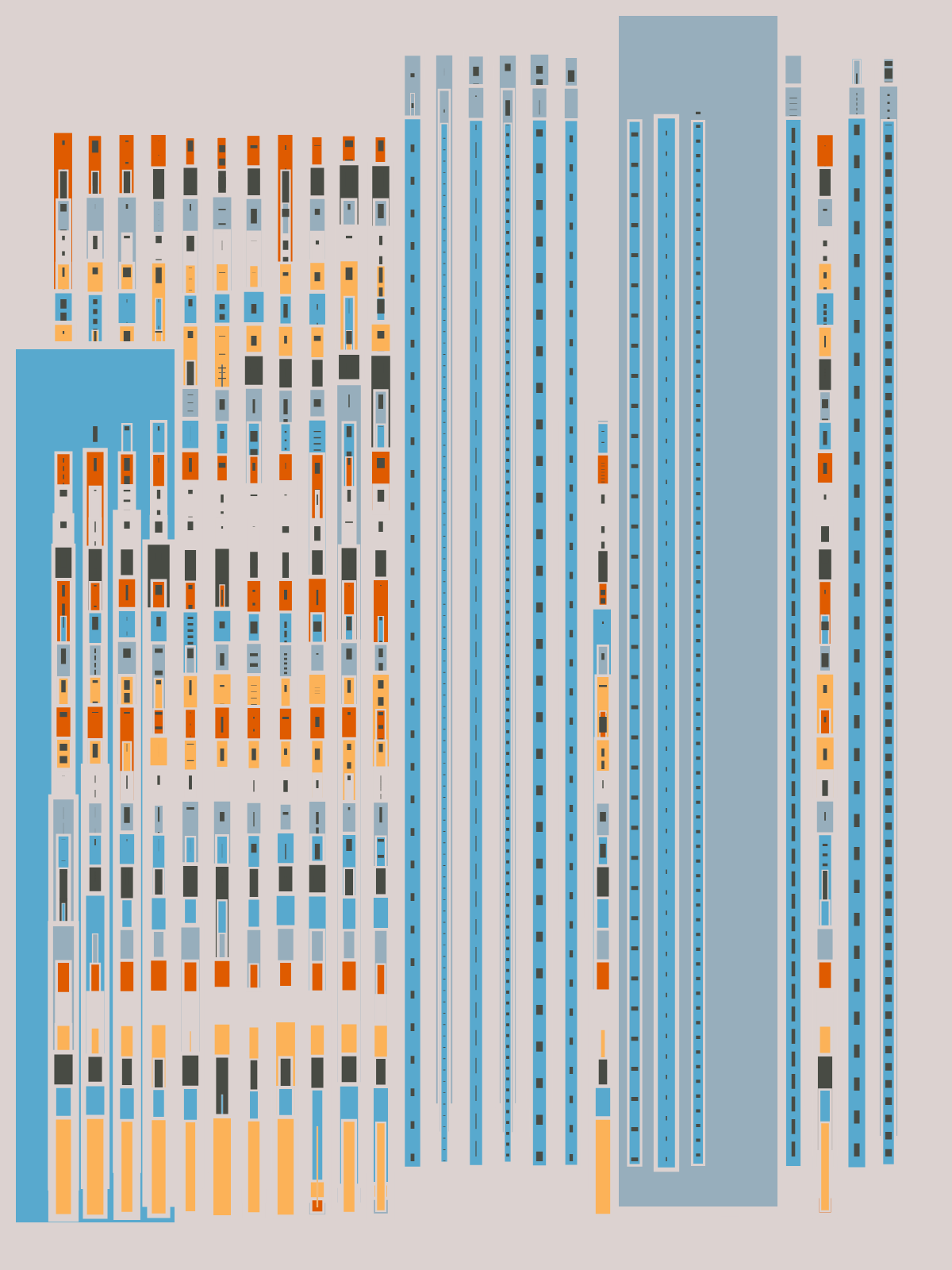

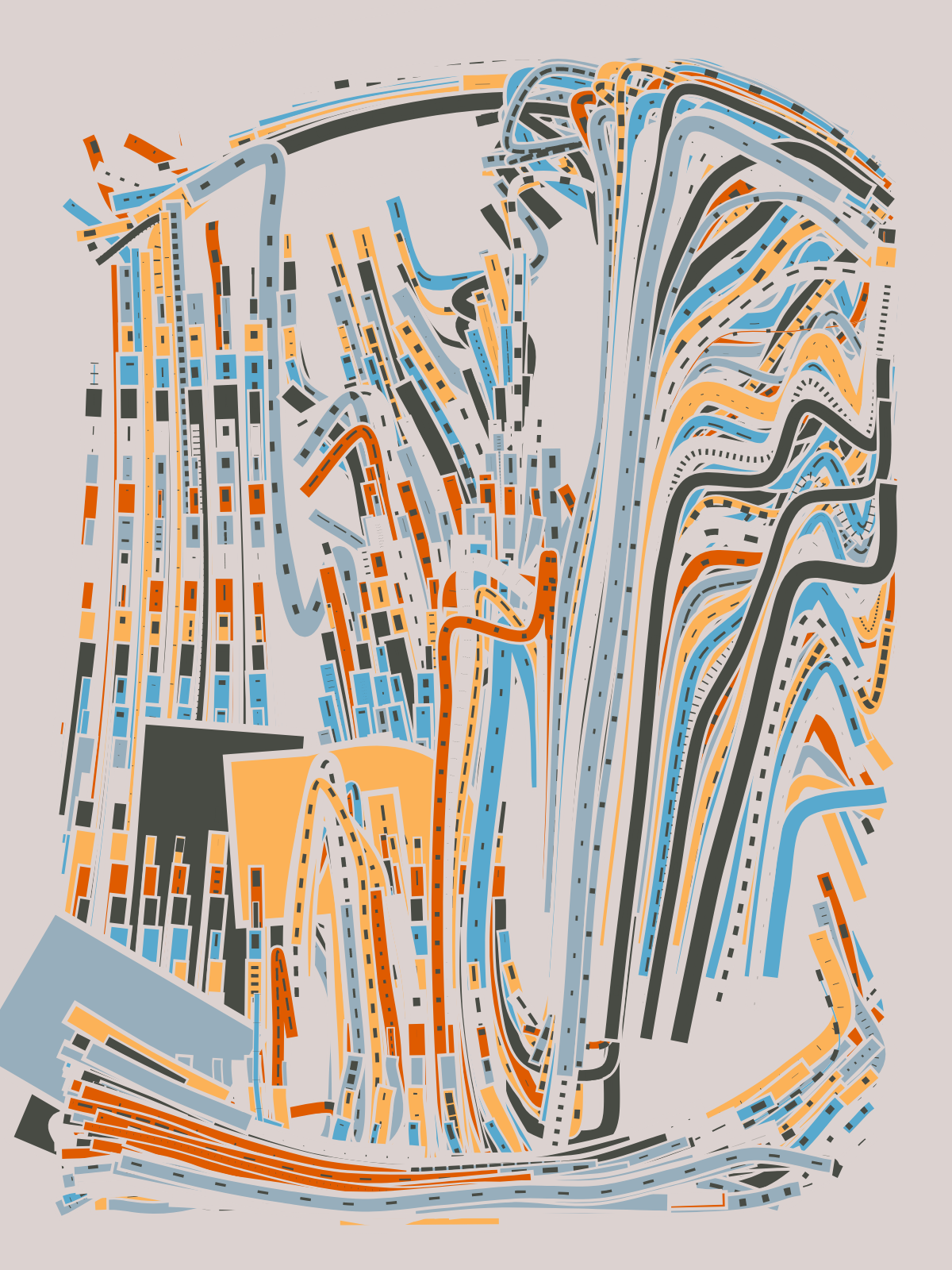
Thursday, Friday and Saturday outputs for 'Saturday's alright for Fighting'
The project was more successful than I had anticipated. With the second project I wanted to take this concept further, asking myself 'what if I try to compress all of the layouts into a single output?' - which is essentially the idea behind 'Annihilate this Week'.
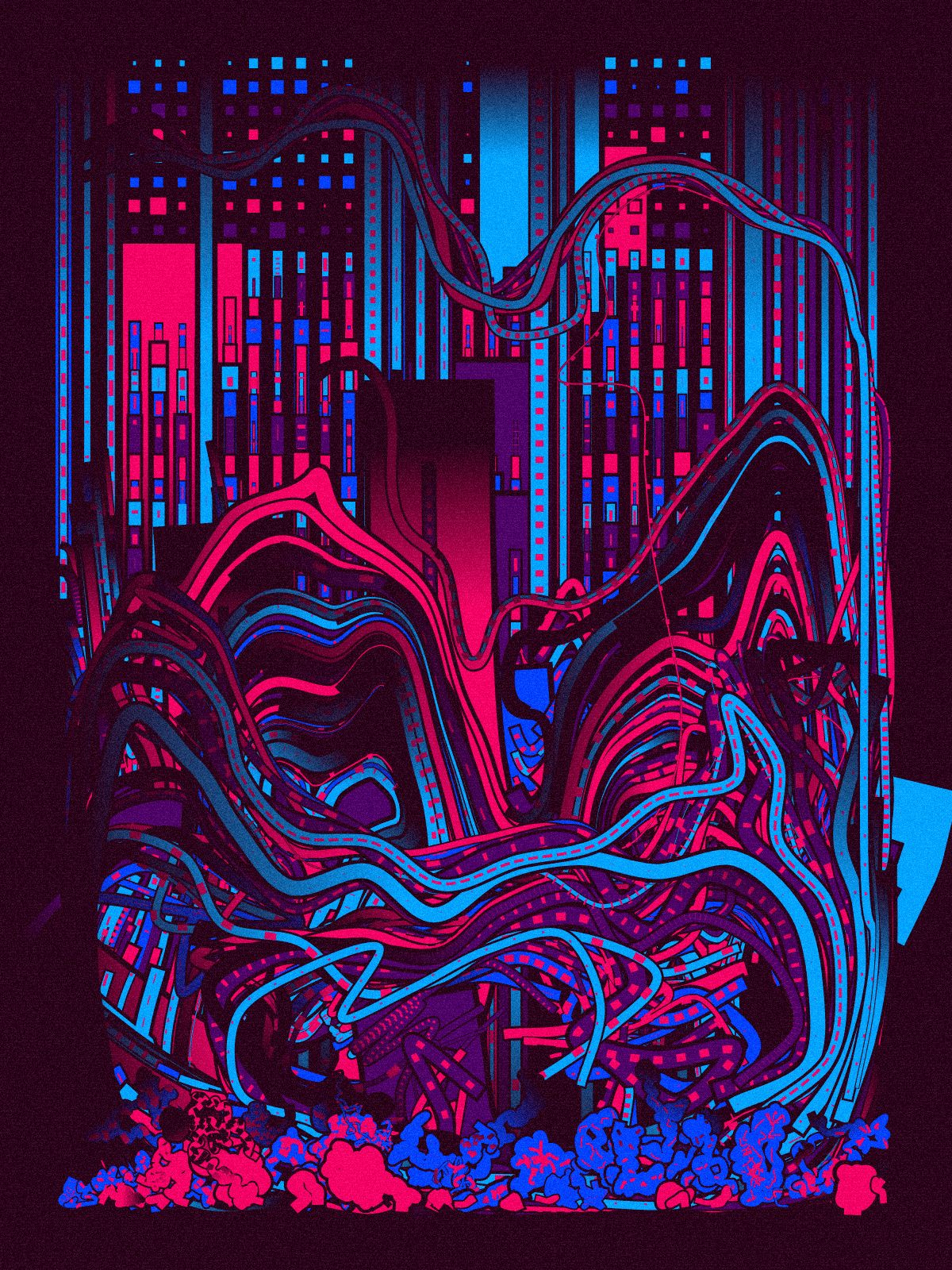
As for the third one, I wasn't entirely certain if I should have released it, because it was maybe too similar in style to the previous two, but I really wanted to wrap up the trilogy.
In 'One of these days' the token picks a certain day to change it's aesthetic, where it becomes bolder, more chaotic, and more colorful.

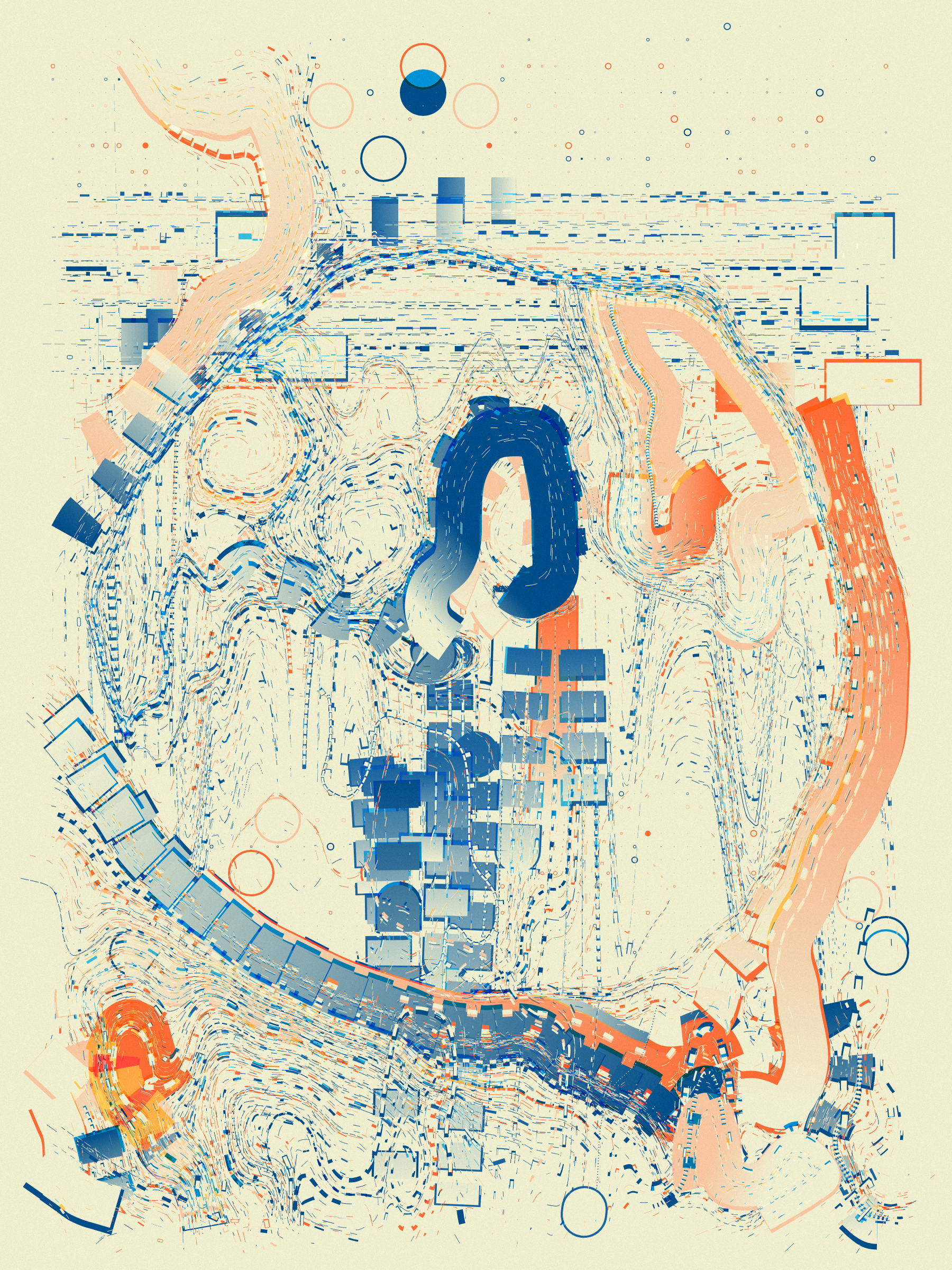
'One of these days' is definitely my favorite one in the trilogy! | Link to Project
I never really talked about these things in detail, I don't really like writing about my pieces because I don't think I'm a good writer. But sometimes it's necessary, because pieces like that need a better explanation. You are an excellent writer and I love when you explain your pieces, I'm not able to do that kind of deep dive with text into my art.
GS: thank you Alessandro! The thing is, when I write about my art I often start understanding more - I often have to explain things that I thought trivial at first.
I think it's a really good exercise, even if you don't end up publishing your writing, it still gives you new insights into your own process.
AF: I love when artists write about what they do, not just in generative art but also in the traditional arts. I try to read a lot of books written directly by the artists themselves, where they talk about their process.
Something I read recently is by an abstract Italian painter that's been mostly active in the 80s, 90s - Georgio Griffa. I like his way of using colors and his compositions that are minimal and playful. He mostly writes in a more philosophical manner about his art.


On long-form generative art
GS: About long-form projects, what's usually the hardest part of making a long-form generative artwork?
AF: That's easy to answer, it's making every output of the generative artwork interesting. It's okay if some outputs are better than others, and of course there's also personal preference involved, but balancing the parameters such that all outputs are somewhat on the same level is definitely the hardest part.
I think fx(params) helps with that, but at the same time - it might be an unpopular opinion - I'm personally not a big fan of it. For me it's about having an artistic fingerprint, the risk I see with using params is that a certain kind of output might be more interesting to collectors and end up dominating the final collection.
With non params pieces rare outputs are so much more special, with params you're not giving generative artworks the chance to unfold in that way.
I really like the concept of giving more power to the collectors and allowing them to contribute to the output, but it's not really what I want to explore right now. I like verse's approach though, where the collectors can save their favorite iterations and then mint one of those.
Maybe in the future I will explore params more.
GS: Making a params piece is a different kind of challenge to traditional long-form projects I think - you have to be careful with which parameters you end up exposing to the collectors.
The Community
GS: Who are some of the artists in the genart space that inspire you and that you'd like to give a shoutout to?
AF: It's still the same people from when I got into Processing, like Marius Watz, Robert Hodgin, Erik Natzke among many others.
The use of colors by Marius Watz was something I've always been impressed by. And then recently of course I've become a big fan of Tyler Hobbs, not only because of Fidenza, but also because of his way of thinking about art that inspires me. And also Matt DesLauriers.
Some others are rudxane, and Volatile Moods, I really like the stuff he's been doing recently, I think it's really great.
The most interesting part about the community to me is this dynamic of people inspiring each other. Of course some people are more in the spotlight than others, but I really like that everyone is learning from each other, and there's this spirit of collaboration.
It's a really vibrant space to explore.
GS: The creative coding community is one of the friendliest communities I've been part of in my time on the internet.
AF: Yeah it's incredible, I was completely hooked after the first Genuary, everyday there was something completely new and cool, and I was just baffled with how people made something everyday for which I would probably need weeks [laughs]
The feeling of being part of something like that is very nice.
Concluding Thoughts
To wrap things up, I'd like to give a big thanks to Alessandro, not just for taking the time to talk to me, but also for sharing his story, his ideas, and his thoughts on some of these topics. I found all of it very fascinating, and it is always very insightful to get a peek into the brain of other generative artists.
And yet again, we find ourselves at the end of the article; here's the mandatory call to action - if you've reached and read this far, it most likely is an indicator that you've enjoyed this article - if you did, consider sharing it on your socials, with friends and followers, it helps tremendously and tells the algorithm that this is meaningful content.
Otherwise consider signing up to the newsletter to receive updates directly in your inbox whenever there's new content. That said, that's it from me - see you in the next one - cheers - and happy sketching - Gorilla Sun 🌸


